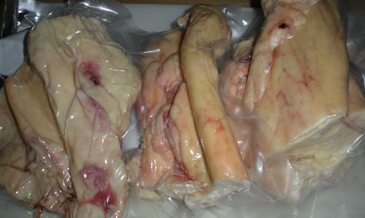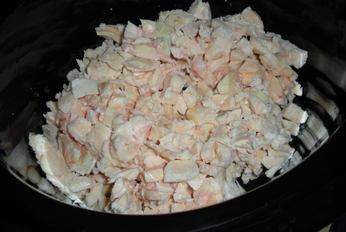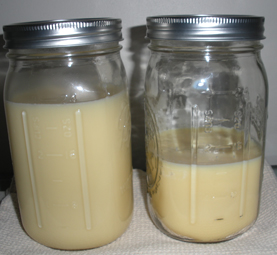As you may have noticed, I let things go around here for awhile. It came down to eating locally or blogging about eating locally, and I picked eating. I may do a catch up post of some challenge meals, since I have the pictures or I may not. We’ll see how it goes.
One of the most exciting things I did this winter was to render my own tallow! It was easy and I made a healthy, delicious, high-heat cooking oil with my own two hands (and a crock pot).
In case you’re wondering, tallow is what you get when you melt down beef, lamb, or bison fat. Some call that fat suet. If you liked the analogies portion of your SATs: beef fat (suet) is to tallow as pig fat is to lard.
Like lard, tallow is a high-heat fat, which means you can deep fry with it. Since I won’t use Crisco or canola oil, I’ve been looking for a good substitute. (Funny/ironic, since tallow and lard were the originals and Crisco and canola are the substitutes!)
Since I didn’t know what I was doing, I went over to CheeseSlave‘s site where there’s there’s a ton of information, including this interesting fact from Sally Fallon Morell:
…the first recorded heart attack in America was in 1921 (Source: Local Forage). Just 10 years after Crisco (hydrogenated cottonseed oil) and 50 years after margarine (clarified vegetable fat) were introduced to the American people.
I wonder—why do government agencies make such a fanfare whenever they come up with a new rule, but barely a whisper when they’re proven wrong and it’s time to retract? (Off the top of my head, I’m thinking about their major faux pas with margarine vs. butter and the assault on eggs with that cholesterol fiasco).
Anyway…here’s the fat, still in its vacuum-sealed packages.
CheeseSlave said to grind it but I don’t have a grinder so I just cut it up into smaller pieces.
CheeseSlave gives instructions for a stove top method, an oven method, and a crock pot method.
I opted for the crock pot method. I had 3-1/2 lbs of fat and put that on low for 13 hours.
After that, I strained it through a mesh sieve, then a coffee filter.
I stored it in mason jars.
I read elsewhere that it will keep for about a month, three or more in the refrigerator—but I don’t know the actual time. As of now, it’s kept 3-1/2 months on my counter top.
I fried potatoes for french fries, sweet potatoes as chips, and celeriac as an experiment. All were fabulously delicious.
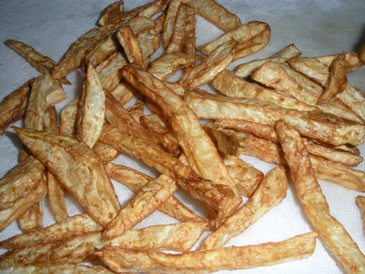
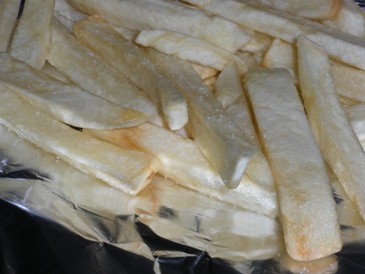
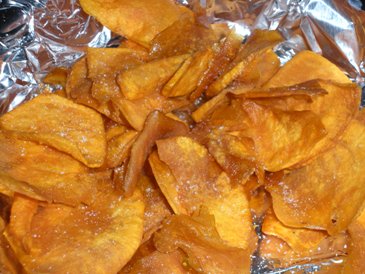
Take special care in disposing of used fat. When dried, it has the consistency of crayons. I’ve been warned not to pour it down the drain, even with very hot water. I let the grease harden and scrape it into the garbage.
Next time, I’m going to try the oven method and way more than 3-1/2 pounds of fat!
